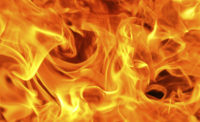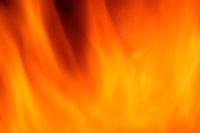Thanksgiving is the leading day for home cooking fires
Three times as many cooking fires occur on Thanksgiving than on an average day

 Cooking is, and has long been, the leading cause of home structure fires and home fire injuries, and according to the National Fire Protection Association (NFPA), home cooking fires peak on major U.S. holidays that traditionally include cooking such as Thanksgiving, Christmas Eve, Christmas Day and Easter.
Cooking is, and has long been, the leading cause of home structure fires and home fire injuries, and according to the National Fire Protection Association (NFPA), home cooking fires peak on major U.S. holidays that traditionally include cooking such as Thanksgiving, Christmas Eve, Christmas Day and Easter.
NFPA’s 2013 “Home Fires Involving Cooking Equipment” report states that in 2011, Thanksgiving was the leading day for home cooking fires, with three times as many fires occurring on this holiday as any average day of the year. In 2011, there were 1,210 fires on Thanksgiving, a 183 percent increase over the daily average.
“Thanksgiving is a fun and festive holiday, but it can also be very hectic,” said Lorraine Carli, vice president of Outreach and Advocacy for NFPA. “Hosting and entertaining guests can cause distractions and it’s easy to forget about what’s cooking in the oven and on the stovetop.”
Dan Doofus learns the hard way
NFPA’s “Kitchen for Trouble” video stars cartoon character Dan Doofus. Dan has to learn the hard way how to prevent cooking fires.
Overall, U.S. fire departments responded to an estimated average of 156,600 home fires involving cooking equipment from 2007 – 2011 per year. These fires caused an annual average of 400 civilian deaths, 5,080 civilian injuries and $853 million in direct property damage.
“By recognizing the risks of the holidays and making simple adjustments, however, people can greatly reduce their chance of home cooking fires,” said Carli.
Simple measures make the day safer
In the “Thanksgiving Fire Safety Tips” video, NFPA’s Lisa Braxton discusses a few simple measures to help ensure a safer Thanksgiving Day.
NFPA recommends the following safety tips for cooking on Thanksgiving:
- Keep an eye on what you fry. Always stay in the kitchen while frying, grilling or broiling food. If you have to leave the kitchen for even a short period of time, turn off the stove.
- Keep things that can catch fire such as oven mitts, wooden utensils, food packaging, towels and curtains away from the cooking area.
- Be alert when cooking. If you are sleepy or have consumed alcohol, don’t use the stove or stovetop.
- If you have a small (grease) cooking fire and decide to fight the fire:
- On the stovetop, smother the flames by sliding a lid over the pan and turning off the burner. Leave the pan covered until it is completely cooled.
- For an oven fire, turn off the heat and keep the door closed.
- If you have any doubt about fighting a small fire:
- Just get out! When you leave, close the door behind you to help contain the fire.
- Call 9-1-1 or the local emergency number from outside the home.
No to turkey fryers
NFPA also discourages the use of turkey fryers, a popular cooking method on Thanksgiving. The use of turkey fryers can lead to devastating burns and other injuries, and the destruction of property due to the large amount and high temperature of oil used. NFPA urges those who prefer fried turkey to look for grocery stores, specialty food retailers and restaurants that sell deep fried turkeys. Find more information about the dangers of turkey fryers on NFPA’s cooking equipment safety webpage. A turkey fryer safety tips sheet is also available to download.
Additional resources for Thanksgiving and other cooking safety tips can be found on NFPA’s Cooking Fire Safety Central webpage. Download NFPA’s cooking safety tips sheet, smoke alarms and cooking infographic, and cooking safety infographic for easy access and to share with family and friends.
Looking for a reprint of this article?
From high-res PDFs to custom plaques, order your copy today!






